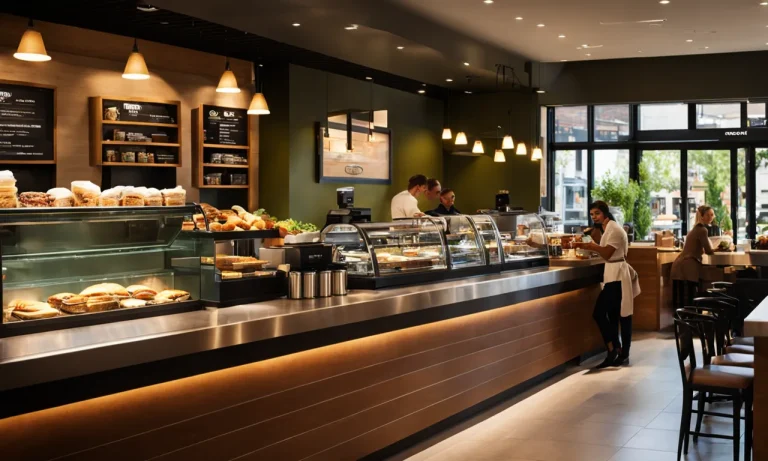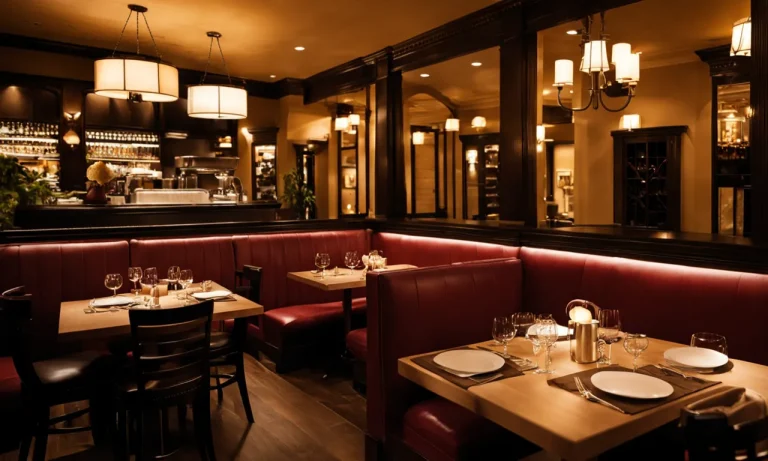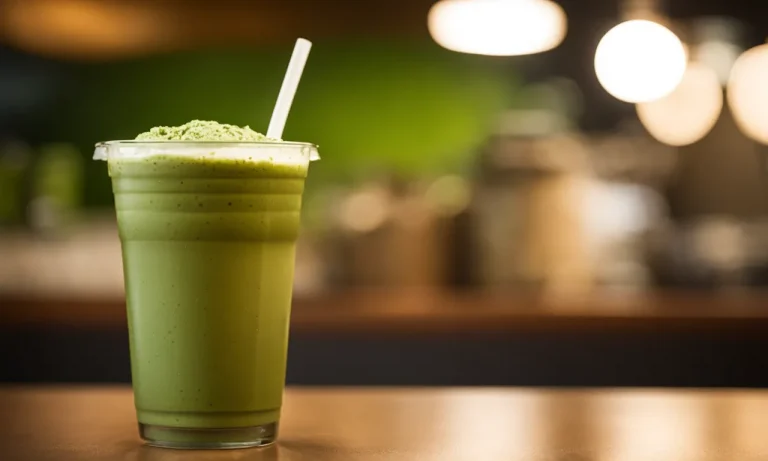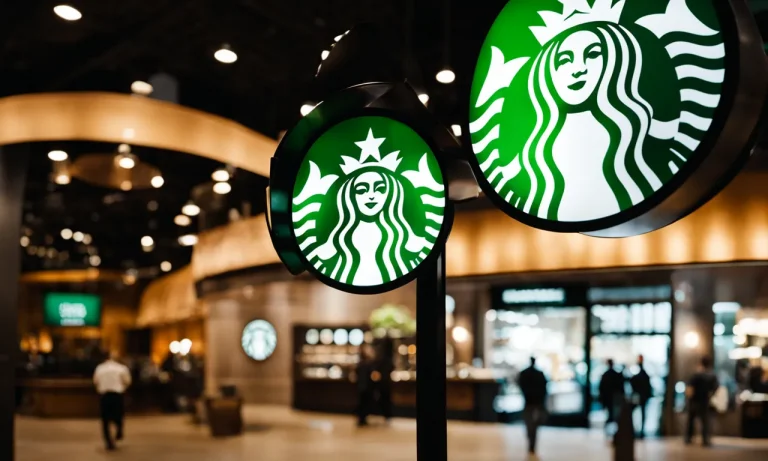Having leftovers from a restaurant meal is great – you get to enjoy the food again without having to cook. But how long can you safely keep those leftovers unrefrigerated before bacteria start to grow and make the food unsafe to eat?
If you’re short on time, here’s a quick answer to your question: Restaurant leftovers should not be left out at room temperature for more than 2 hours. After that point, the risk of foodborne illness rises exponentially as bacteria multiply quickly.
In this comprehensive guide, we’ll go over everything you need to know about the shelf life of restaurant leftovers and how to store them properly for maximum freshness and safety.
How Long Can Food Stay Out Before Going Bad?
When it comes to food safety, it is crucial to know how long different types of food can safely stay out before they start to spoil. Leaving food out at room temperature for too long can lead to the growth of harmful bacteria, which can cause foodborne illnesses.
To ensure the safety of your meals, it is essential to follow certain guidelines and be aware of the potential risks.
The 2 Hour Rule
The general rule of thumb is that perishable food should not be left out at room temperature for more than 2 hours. This includes a wide range of foods such as meat, poultry, seafood, dairy products, cooked rice, and cooked pasta.
The reason behind this is that bacteria can multiply rapidly in the “danger zone” between 40°F (4°C) and 140°F (60°C). Therefore, it is crucial to refrigerate or reheat these foods within 2 hours to prevent bacterial growth.
Pro Tip: If the temperature is above 90°F (32°C), the 2-hour rule becomes even stricter, reducing the time to just 1 hour.
What Happens When Food is Left Out Too Long
When food is left out at room temperature for an extended period, it can become a breeding ground for bacteria. This can result in foodborne illnesses such as salmonella, E. coli, and listeria. These bacteria can cause symptoms like nausea, vomiting, diarrhea, and abdominal pain.
In severe cases, they can even lead to hospitalization.
Pro Tip: If you’re not sure how long a particular food has been left out, it’s better to err on the side of caution and discard it. It’s not worth the risk of getting sick.
For more information on food safety and guidelines, you can visit the FoodSafety.gov website. They provide comprehensive information on safe food handling practices to ensure the health and well-being of you and your loved ones.
Why Restaurant Leftovers Spoil Faster
When it comes to restaurant leftovers, it’s important to understand why they spoil faster than freshly prepared food. There are a few key factors that contribute to this faster spoilage.
More Handling Increases Contamination Risk
One reason why restaurant leftovers spoil faster is because they go through more handling than freshly prepared food. Each time leftovers are served, they are transferred from the storage container to a plate or takeout container.
This additional handling increases the risk of contamination from bacteria and other microorganisms.
In addition, restaurant leftovers are often handled by multiple people, including servers, kitchen staff, and customers themselves. This increases the chances of cross-contamination, where bacteria from one surface or person is transferred to another.
Cross-contamination can occur if proper food handling and hygiene practices are not followed.
To minimize the risk of contamination and ensure the safety of leftovers, it’s important for restaurant staff to follow strict food handling and hygiene protocols. This includes washing hands thoroughly, using clean utensils and containers, and storing leftovers at the proper temperature.
Commercial Equipment Keeps Food Out of Temperature Danger Zone
Another reason why restaurant leftovers spoil faster is because they may not be stored at the proper temperature. Food that is left out for too long can enter the “temperature danger zone,” which is between 40°F (4°C) and 140°F (60°C).
Commercial restaurant equipment, such as refrigerators and freezers, are designed to keep food at safe temperatures. However, once food is removed from these controlled environments, the clock starts ticking.
If leftovers are left out for an extended period of time, bacteria can multiply rapidly and cause foodborne illnesses.
It’s important for restaurants to train their staff on proper food storage practices. This includes promptly refrigerating or freezing leftovers, keeping hot foods hot and cold foods cold, and monitoring the temperature of storage areas regularly.
By following these practices, restaurants can help ensure the safety and quality of their leftovers.
For more information on food safety and handling, you can visit the FDA’s website.
Tips to Maximize Leftover Safety
Pack Up Leftovers Quickly
When it comes to leftover safety, time is of the essence. The longer food sits at room temperature, the greater the risk of bacterial growth. To minimize this risk, it is important to pack up your leftovers quickly after finishing your meal. Don’t let them sit out on the table for too long!
Get Food in the Fridge Fast
The next step in maximizing leftover safety is to get your food into the refrigerator as soon as possible. The refrigerator helps slow down the growth of bacteria, so it’s important to store your leftovers at a temperature below 40 degrees Fahrenheit (4 degrees Celsius).
Aim to get your leftovers in the fridge within two hours of cooking or serving.
Use Shallow Containers for Quick Cooling
Using shallow containers is a smart strategy for quick cooling of leftovers. When food is stored in deep containers, it takes longer for the heat to dissipate, which can lead to bacterial growth. By using shallow containers, you can ensure that your leftovers cool down quickly and evenly, reducing the risk of foodborne illnesses.
Don’t Mix Old and New Leftovers
It may be tempting to combine old and new leftovers to save space in the fridge, but it’s not a good idea from a safety standpoint. When you mix old and new leftovers, you introduce bacteria from the old leftovers to the fresh ones. This can increase the risk of contamination and spoilage.
Instead, store your leftovers separately in airtight containers to maintain their quality and safety.
How to Tell if Leftovers are Still Good
When it comes to leftovers, it’s important to know if they are still safe to eat. Nobody wants to risk getting sick from spoiled food. Here are some simple ways to determine if your restaurant leftovers are still good:
Check the Color and Texture
The first thing you should do is visually inspect the leftovers. Look for any significant changes in color or texture. If the food appears discolored, mushy, or slimy, it’s a clear sign that it has gone bad. Trust your instincts – if it doesn’t look right, it probably isn’t.
Give It a Sniff Test
Another way to determine the freshness of your leftovers is to give them a sniff. While this may not be the most pleasant task, it can provide valuable information. If the food has a strange or foul odor, it’s a strong indication that it has spoiled.
On the other hand, if it still smells normal, it’s more likely to be safe to eat.
Taste a Small Amount
If you’re still unsure about the quality of your leftovers after checking the color and giving them a sniff, you can taste a small amount. It’s important to note that this method is not foolproof and should be done with caution.
If the food tastes off or has a strange flavor, it’s best to err on the side of caution and discard it.
It’s worth mentioning that these methods are not foolproof and should be used as a general guide. If you have any doubts about the safety of your leftovers, it’s always best to err on the side of caution and throw them away. Your health is too important to take unnecessary risks.
Storing Leftovers for Maximum Freshness
When it comes to storing restaurant leftovers, proper handling and storage techniques are crucial to maintain their freshness and safety. Here are some tips to help you store your leftovers for maximum freshness:
Use Airtight Containers
One of the most important steps in storing leftovers is to use airtight containers. These containers help to prevent air and moisture from entering, which can lead to spoilage. Using airtight containers also helps to maintain the flavor and texture of the leftovers.
Glass containers with tight-fitting lids or high-quality plastic containers are ideal for storing restaurant leftovers.
Quickly Cool Below 40°F
After enjoying a meal at a restaurant, it’s important to cool the leftovers quickly to prevent bacterial growth. Bacteria can multiply rapidly at temperatures between 40°F and 140°F, also known as the “danger zone.”
To cool leftovers, divide them into smaller portions and place them in shallow containers. This allows the leftovers to cool quickly and evenly. Afterward, store the containers in the refrigerator or freezer as soon as possible.
Eat Within 3-4 Days
While leftovers can be a convenient option for future meals, it’s crucial to consume them within a reasonable timeframe. The general rule of thumb is to consume restaurant leftovers within 3-4 days. This timeframe ensures that the leftovers are still safe to eat and maintain their quality.
If you’re unable to consume the leftovers within this timeframe, consider freezing them for longer storage.
It’s important to note that the freshness and safety of leftovers can vary depending on the type of food. Some foods, such as cooked meats and seafood, may have a shorter shelf life compared to vegetables or grains.
When in doubt, always use your best judgment and follow proper food safety guidelines.
For more information on food storage and safety, you can visit the FoodSafety.gov website. They provide detailed guidelines on handling, storing, and reheating leftovers to ensure food safety.
Conclusion
Restaurant leftovers shouldn’t stay out at room temperature for more than 2 hours. After this point, bacteria can multiply to dangerous levels. Get leftovers into the fridge as soon as possible, store in airtight containers, and use within 3-4 days for the best quality and safety.
Following these simple rules will help you safely enjoy your restaurant meals twice and cut down on food waste!
By understanding how long restaurant leftovers will last unrefrigerated, as well as how to store and reheat them properly at home, you can safely enjoy your favorite meals again without getting sick. Trust your senses – if leftovers smell, look or taste off, don’t take any chances.
When in doubt, throw it out. But with proper handling, you can stretch your food dollars and reduce waste by safely repurposing restaurant leftovers.






